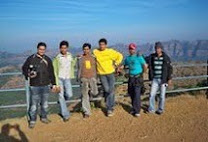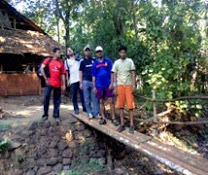- The history of Kelshi village from approx 1300 B.C is recorded and available.
- Originally called Kardaligram which later changed to Kardali to Kaelshi to Kelshi. In the sacred books of the Mahalakshmi temple the village is still referred to as Kardaligram.
- The village seen today was earlier laid in three sections. The village moat received water from the sea.
- By the year 1600 the population of the village started increasing, as the village was the chief seaport. Business minded Gujar community people settled on the banks of the port. This area is still referred to as Gujarwada.
- Shivaji Maharaj visited the great seer Yakub baba in year 1661 and 1676 and sought his blessings.
Yakub Baba Dargah
- He awarded land measuring 653 acres for construction of Yakub baba Dargah. In the citation letter there is a special mention as Hajrat Baba Bahut Thor Wali, loosely translated as Hajrat Baba the Great One.
- In year 1681 Yakub baba left for heavenly abode.
- The work on the Dargah of Yakub baba was started by Shivaji Maharaj and later continued by Sambhaji Raje but somehow it was never completed. Later Bajirao-I tried to take the work to its fruition.
- Natuarlly formed Sand Dune called as Walucha Dongar in Marathi is at the northern part of Kelshi. As per the historical records and evendences the said Sand Dune is actually a result of Tsunami hit which was formed around the time of Vasco da Gama's visit to India somewhere in 15th century.
» For more information about Kelshi visit Kelshi.com








